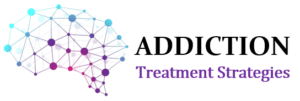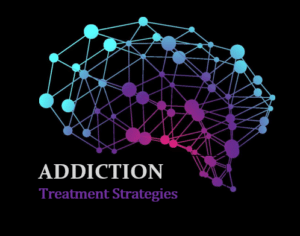How ATS Approaches Addiction
Addiction Problem – Moral vs Scientific Approach
The first step in solving an addiction problem is to describe the problem. Conventional wisdom has indicated that addiction is a moral problem. In the 1930s the political climate in the United States, or all over the world with for that matter. People had substance abuse disorders or substance problems, primarily alcohol at that time, and they were all considered drugs. Those people were then determined morally flawed and what they needed to do was work on their spirituality in order to get better since it was a moral problem.
In 1932 AA, or Alcoholics Anonymous, was developed and since then has been a predominant conventional wisdom understanding on how to treat an addiction. Now contrary to conventional wisdom is science. Science is easier to understand and in 1930 scientists started to understand the neurobiology of the brain, specifically a scientist by Donald Hebb. Hebb discovered how neurotransmitters functioned by firing in a series and then become wired in the series. What Hebb was saying is as a result of multiple neurotransmitters firing in a series, these neurotransmitters would fire in that loop then developed what is known as an Engram or memory loop. The Engram is the essence of why we have an addiction.
Defining Addiction
There are multiple definitions for addiction. We have the NIMH definition which states addiction is a chronic relapsing disease in which the structure and function of the brain have changed. We also have a SAMHSA definition, which is very similar. We also have an ATS definition. In ATS addiction treatment strategy, we say substance abuse, or an addiction, is a stress-induced impulse control disorder that leads to the use of a substance or a behavior to decrease that stress. We use this definition because it’s related to the science of the 1930s. As compulsion and the craving fire and the person becomes stressed, it can lead to the neurological response to decreasing a stress which can be eating, alcohol, or heroin. Any of those behaviors or substances can be used to decrease the stress.
ATS Scientific Approach To Addiction
What we offer here at ATS is a program that addresses the individual needs of a patient related to a scientific approach to an addiction. First and foremost, we offer medical assistance to decrease cravings and compulsions to use a substance. We also treat the underlying causes of an addiction. Our physicians are familiar with anxiety, depression, bipolar, and ADHD. We treat these simultaneously and inevitably almost all our patients have underlying causes for their addiction. Our patients may have started using substances as early as 12 or 13 years of age and that’s a time when their brain is growing quickly so if you start using marijuana at an early age, your brain growth development will morph as a result.
All our physicians and therapists are available to our patients to develop a unique treatment plan for that individual to address the underlying causes of their addiction and in addition to their addiction. Our therapist is available to our patients 24/7. We don’t work 9-5 because addiction doesn’t occur 9-5. We understand that patients may need to come to us Sunday at three in the morning. Our patients get better as a result of our individual availability to all of our patients. Most of our patients have been in the program a minimum of six months and the majority of our patients are here from 12 to 18 months because it takes that long to fix this. If it’s a neurochemical problem, in which the brain function is destructed, we’re not going to fix that in 30 days.
ATS Approach
At ATS we use medical assistance, medical interventions, individual therapy, and group educational classes. In these classes, we teach CBT behavioral learning skills. We have 70 individual lectures that we use, where a teacher comes in and teaches people how to use our strategies. We also have lesson plans for all of our patients to go through the plans in an educational format and then they can practice those skills in group therapy or group intervention. We have group intervention classes here where people can practice CBT in a format with 25 or 20 other patients who are here. We practice those on a regular basis.
Here at ATS we also have family support groups where patients come in, along with the patient’s family, and we teach them as to what it is we do at ATS that increases our outcomes. Our outcomes here at ATS are relatively significant from our perspective. Patients who have been on our program for two years, at the end of the two years, those patients who came in unemployed, 70% of them are now employed. That’s a good sign because that means they’re back in the work environment. Of those patients who came still living with mom and dad, about 33% of those people are living individually. In addition, those people also have relationships with a significant other. At ATS, we have 70% of our patients who are now employed, which means they’re making over $30,000 a year and are able to support themselves. They no longer live with mom and dad, they have a relationship, and they’re no longer using substances.
We know that it takes an appreciable amount of time to reboot the brain and that’s what we do here at ATS. We don’t treat addiction, we treat people with an addiction.
Contact us at (618) 692-6880 or email [email protected]






Leave a Reply
Want to join the discussion?Feel free to contribute!